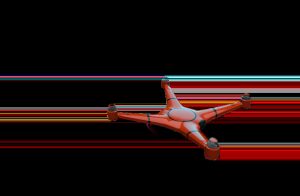The Return of Personal Rapid Transit
Transportation has undergone a remarkable transformation over the years, from horse-drawn carriages to electric cars. One form of transportation, the Personal Rapid Transit (PRT) system, has gradually disappeared from our roads and cities. However, with the advancement of technology and the growing concerns for sustainable transportation, PRT is returning to the spotlight as a viable solution. In this article, we will take a closer look at the history of PRT, its benefits, and whether it has the potential to make a comeback in today’s world.
What is Personal Rapid Transit?
PRT is a type of public transportation that operates on a network of small, lightweight automated vehicles. These vehicles run on dedicated guideways or tracks, and unlike traditional mass transit systems, they provide on-demand, non-stop, point-to-point service. Passengers can travel directly to their destination without stopping at any intermediate stations, making the journey faster and more convenient.
The Rise and Fall of PRT
The concept of PRT emerged in the 1950s as a futuristic transportation solution. The first PRT system, called “Parkway,” was installed in Morgantown, West Virginia, in the 1970s and operated successfully for over 40 years. Other cities, such as Coventry in the UK and Tampa, Florida, also experimented with PRT systems, but they were ultimately shut down due to high maintenance costs and low ridership. As a result, PRT lost its momentum and was deemed a failure by many transportation experts.
The Revival of PRT
With the rise of environmental concerns and the need for sustainable transportation, PRT is making a comeback. Several factors contribute to this revival, including technological advancements and changing travel patterns. PRT systems now offer improved reliability and efficiency, with the use of modern components and software. They also offer more flexibility, allowing passengers to travel directly to their desired destination, which is especially beneficial for those with mobility limitations. Additionally, PRT systems can be easily integrated with existing mass transit systems, providing a convenient last-mile solution.
The Benefits of PRT
PRT offers several benefits that make it an attractive option for urban transportation. One of the most significant advantages is its potential to alleviate traffic congestion. By providing direct point-to-point service, PRT reduces the number of vehicles on the road, thus easing traffic flow. Additionally, PRT systems are environmentally friendly, as they run on clean energy sources and emit zero pollutants. They also require less space than traditional transportation systems, making them ideal for densely populated cities. Moreover, PRT can help reduce travel time and increase productivity, as passengers can reach their destination efficiently and without any delays.
Will PRT Make a Comeback?
While the potential benefits of PRT are evident, the question remains, can it make a comeback? The short answer is, it depends. PRT systems are still in the early stages of development, and there are several challenges that need to be addressed before they can be implemented on a larger scale. The high initial capital investment and the lack of public awareness are some of the major hurdles in the widespread adoption of PRT. Additionally, the success of PRT relies heavily on proper planning and integration with existing transportation systems.
The Future of PRT
Despite these challenges, PRT is gaining traction in many countries. In China, several cities have successfully integrated PRT systems into their public transportation network, and the results are promising. Similarly, countries like the UK, Singapore, and the United States are also exploring the potential of PRT. With the demand for sustainable transportation increasing and technology constantly evolving, PRT may very well become a common sight in our cities in the future.
In conclusion, the return of Personal Rapid Transit marks a new era of transportation. With its potential to reduce traffic congestion, increase efficiency, and promote sustainable travel, PRT has proven its worth as a viable solution. While there are still challenges to overcome, the future looks bright for PRT. As technology advances and more cities embrace this mode of transportation, we may see a PRT system in our neighborhood sooner than we think.







